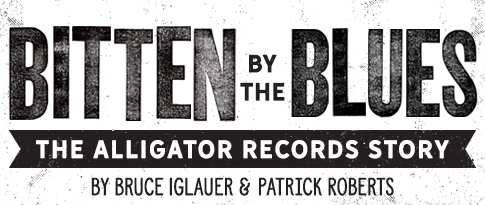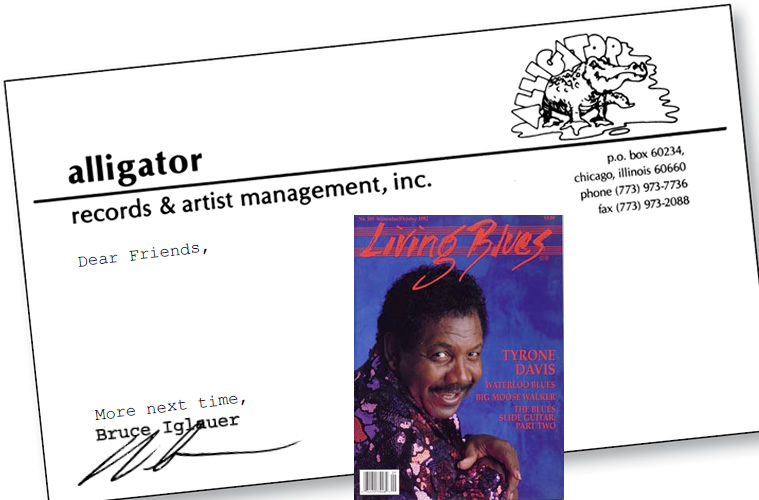Dear Friends,
Seems like these days I can hardly get out of the studio long enough to write these “letters.” Over the weekend I was finishing what I hope are the final mixes of the long-awaited Maurice John Vaughn album. Maurice and I started this record almost two years ago, but it got delayed with our various touring schedules (and a few clashes of artistic vision). Now that the record is in its final form, I see that Maurice has created twelve tracks of “cutting edge” blues, from Chicago shuffles to a reggae- inspired funk to solo acoustic material. It’s different from anything else on Alligator, and I think it marks the blossoming of an important new artist. Maurice is the third artist from our “New Bluebloods” record to graduated to cutting full albums for Alligator, along with The Kinsey Report and Lil’ Ed and the Blue^ Imperials,
It will be a couple of months before Maurice’s album will be “on the street,” but you can get down and boogie with a brand new, hour-long record from Lil’ Ed! It’s; called “What You See Is What You Get” and for the literally thousands of you who saw Ed and the band open one of the twenty-five Alligator Records 20th Anniversary Tour shows, I need say no more. Loads of fun, loads of energy, loads of ripping slide guitar.
Also coming this fall (if we get them all done)—new ones from Little Charlie and the Nightcats (produced by Joe Louis Walker); Kenny Neal (I’m flying to Florida to finish cutting it this week); Saffire—The Uppity Blues Women (we start recording, here next week); the first U.S. issue of the Sippie Wallace album cut in 1962 in Denmark (with Roosevelt Sykes and Little Brother Montgomery); and finally The Alligator Records Christmas Collection (14 songs by 14 members of the Alligator family) !
I was telling you last time about the making of Son Seals’ “Chicago Fire” album. We cut, as usual, at Curtis Mayfield’s Curtom Studios with Fred Breitberg engineering.
By 1980 Alligator standards, it was a long project—three nights of recording! Even with the input of his long-time road band and long-time co-producer (me), this record was ultiinhtely Son’s personal vision. In many ways, it’s his broadest, most innovative album. You can hear his whole musical personality on it—his Arkansas deep blues roots (remember, he began playing with Robert Nighthawk, Joe Hill Louis and i Sonny Boy Williamson) his Chicago R&B toughness, his anger and intelligence and sardonic humor.
“Chicago Fire” wasn’t a big success when it first came out. The blues fans found it too far from the tradition, but of course it was far too black for rock ‘n’ roll radio then or now, and not quite polished enough for the R&B stations. Plus we probably made a mistake by showing son cool and collected in a suit, instead of hot and sweating on the bandstand. But it’s a record that I’m particularly proud of, because it gave a major artist a chance to make a major statement, and one that stands the test of time. Son Seals is one of the few artists I can claim to have “discovered” (along with a little help from Wes Race), and he’s never let down my faith in him.
By the way, “Chicago Fire” is just out on CD and cassette; here’s your chance to discover one of our hidden gems.
More next time,
Bruce Iglauer

